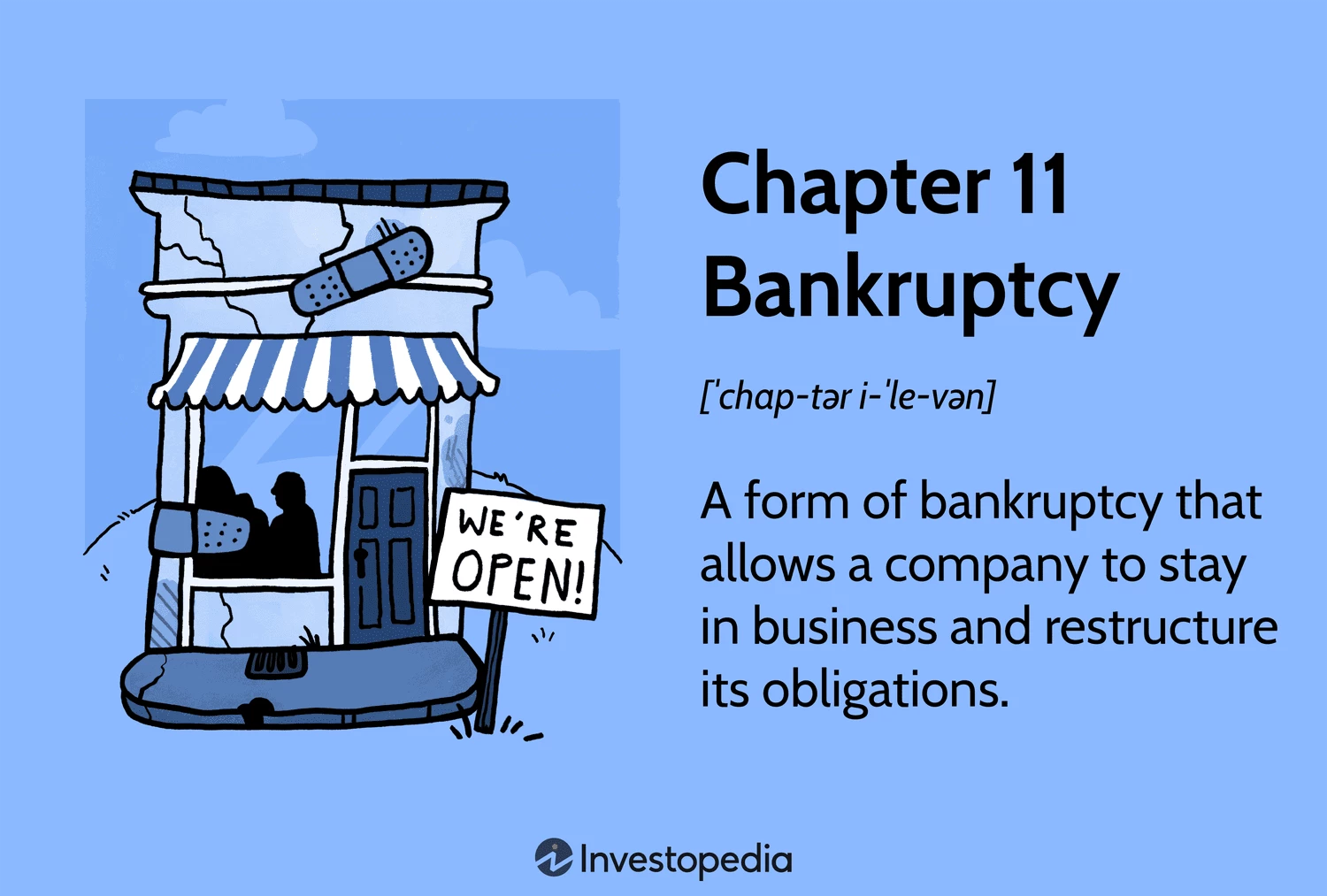Understanding Chapter 11 Bankruptcy
Chapter 11, commonly referred to as a “reorganization” bankruptcy, is a legal process that facilitates the restructuring of a debtor’s assets and liabilities under court supervision. This bankruptcy option, prevalently used by businesses, allows companies to continue operating while enhancing their financial position.
Key Points to Note:
- Chapter 11 bankruptcy permits businesses to restructure their finances and operations while staying operational.
- Companies proposing a reorganization plan in Chapter 11 must prioritize the best interests of their creditors.
- In cases where debtors fail to present a plan, creditors have the opportunity to propose one.
- Renowned entities like General Motors and United Airlines have successfully utilized Chapter 11 to reorganize debts while sustaining their operations.
The Process of Chapter 11 Bankruptcy
Chapter 11, named after a section of the U.S. Bankruptcy Code, grants companies the opportunity to restructure and embark on a fresh start. Throughout this process, businesses receive court support to restructure debts and assets without halting operations.
Large U.S. companies like General Motors and United Airlines commonly leverage Chapter 11 to sustain operations during financial hardships.
Although primarily utilized by corporations and partnerships, Chapter 11 is also an option for individuals burdened by significant debt and ineligible for Chapter 7 or 13.
In Chapter 11, the debtor in possession typically manages business affairs, except in cases of misconduct, where a court-appointed trustee takes charge.
Throughout Chapter 11 proceedings, the court oversees critical business decisions, including asset sales, contract terminations, and operational adjustments, to safeguard creditors’ interests.
Businesses filing for Chapter 11 present reorganization plans, often involving cost reductions and debt renegotiations, subject to court review for feasibility and equity.
Chapter 11 and Small Enterprises
The Small Business Reorganization Act of 2019 introduced Subchapter V to Chapter 11, simplifying the bankruptcy process for small businesses with specific debt thresholds.
Recent legislative changes, such as the CARES Act and BTATCA, have temporarily adjusted debt limits, enhancing bankruptcy accessibility for small businesses.
Subchapter V streamlines bankruptcy timelines, encourages flexible restructuring negotiations, and involves private trustees to aid in consensus building for reorganization plans.
Due to the complexities and costs associated with Chapter 11, businesses often explore alternative solutions before resorting to this form of bankruptcy.
A Case Study of Chapter 11
In January 2019, Gymboree Group Inc., a well-known children’s clothing retailer, filed for Chapter 11, leading to the closure of several North American stores.
During reorganization, Gymboree secured financing to support operations and explored opportunities to sell subsidiaries and intellectual property.
Following a successful reorganization in 2017, Gymboree’s Chapter 11 experience highlights the potential for companies to rejuvenate post-bankruptcy.
The U.S. Bankruptcy Code: An Overview
Various chapters of the U.S. Bankruptcy Code cater to different entities, encompassing individuals, businesses, municipalities, farmers, and international cases. Prominent chapters like 7, 11, and 13 address liquidation, reorganization, and debt adjustment, respectively.
Distinguishing Chapter 7 from Chapter 11
Chapter 7 involves asset liquidation, while Chapter 11 focuses on restructuring financial affairs. Companies maintain greater control over assets in Chapter 11 than in Chapter 7, making it a preferred option for businesses.
The Benefits of Chapter 11 Filing
Chapter 11 enables ongoing business operations, revenue generation, and debt negotiation under court protection. Creditors often favor Chapter 11 due to its improved debt recovery potential.
Challenges of Chapter 11 Filing
Chapter 11 is intricate, expensive, and time-intensive, dissuading businesses from immediate bankruptcy solutions. Legal fees, court approvals, and sustainable debt repayment plans present hurdles for companies contemplating this route.
Final Thoughts
Chapter 11 serves as a strategic tool for businesses navigating financial distress, providing a pathway for reorganization and recovery. Given its complexity and costs, exhaustive exploration of alternative avenues is recommended before committing to Chapter 11 reorganization.
